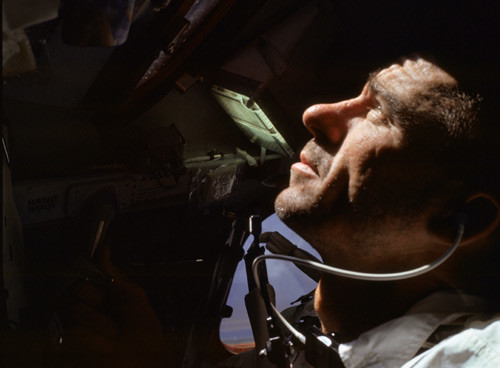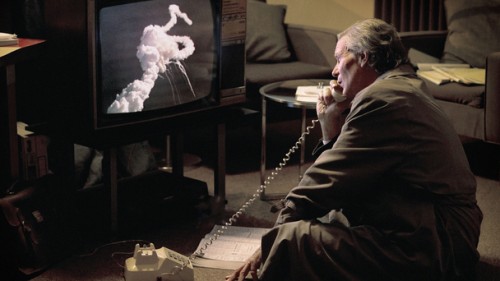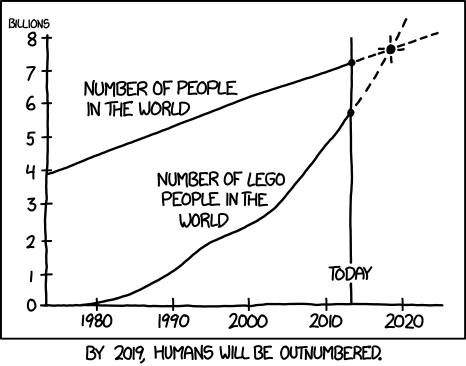Tag archives: Space Shuttle
She’s the greatest dancer, how to name an element, soccer ball finally orbits Earth
By Hamish Johnston
The award for most bizarre title for a scientific paper goes to psychologist Nick Neave and colleagues at the UK’s Northumbria University and University of Lincoln for “Optimal asymmetry and other motion parameters that characterise high-quality female dance”. The team says it used “a data-driven approach to pinpoint the movements that discriminate female dance quality”. Why, you might ask? “The form and significance of attractive dance, however, has been less well studied, and this limits our understanding of its role in human courtship and partner selection.” The above video is from a previous study by the team about what constitutes a good male dancer.
View all posts by this author | View this author's profile
Pushing towards the human–Martian frontier

Eye on the sky: NASA astronaut Walter Cunningham during the Apollo 7 mission, in October 1968. (Courtesy: NASA)
By Tamela Maciel at the National Space Centre in Leicester
Last week, the planet Mars was under the international spotlight once more as NASA scientists announced that liquid water may still be flowing on the surface of the red planet. Also, the much-anticipated film adaptation of The Martian – a 2011 novel by American author Andy Weir – a science-driven story of human survival on Mars, hit the box office. Mars was also the hot topic at a recent event held at the National Space Centre in Leicester. The guest of honour was Apollo 7 astronaut Walter Cunningham and throughout the hour-long Q&A, he emphasized the need to push the “next frontier” and send humans to Mars.
Cunningham is not a man lacking in confidence or the experience of pushing boundaries. When asked if he ever felt the pressure of the astronaut selection or training process, he said “I thought I could fly anything, any time, anywhere. Was that true? I don’t know. But that’s how I felt.”
View all posts by this author | View this author's profile
Homework help from NASA, rescue missions, top technologies and more
By Tushna Commissariat
Who doesn’t like a bit of help with their homework – not 4-year-old Lucas Whiteley from West Yorkshire in the UK. When faced with some tough and rather complex scientific questions, the enterprising child filmed a video of himself asking the US space agency NASA for some help. And much to his delight, he got a video response courtesy of NASA engineer Ted Garbeff of the Ames Research Center in California. In the 10-minute video, Garbeff answers Whiteley’s questions including “How many stars are there?” and “Did any animals go to the Moon?” Of course, the story garnered nation-wide interest and was covered by the Huffington Post, the Telegraph and others. Take a look at Garbeff’s response video above.
View all posts by this author | View this author's profile
Grumpy astronauts, LEGO overpopulation, videogame quantum mechanics and more
By Tushna Commissariat
This week, the Red Folder seemed filled to bursting with amusing and captivating news stories from around the web about physics. To start off, this rather hilarious and candid account of the Apollo 7 mission on the Discovery News website. I will not give too much away and let you read the story yourself, but suffice to say that having a rather bad cold while in space sounds dreadful and is bound to make the best of us quite grumpy – and I am sure the Apollo 7 crew would agree with me!
View all posts by this author | View this author's profile
BBC celebrates Richard Feynman
By Hamish Johnston

William Hurt stars as Richard Feynman in the BBC2 drama The Challenger.
The BBC and the Open University have teamed up to produce two television programmes about Richard Feynman – the Nobel-prize-winning scientist who died 25 years ago.
Outside of the physics community, Feynman is probably best known for his diligent and outspoken role in the investigation into the causes of the Challenger disaster.
Like many of my generation, I can remember exactly where I was when the Space Shuttle Challenger exploded shortly after take-off on 28 January 1986: it was a snowy Tuesday in Guelph, Ontario, and for some reason I was still at home at 11.39 a.m. when the accident occurred.
Space Shuttle rap
By Michael Banks
It had to come didn’t it? With the launch of the last and final flight of the Space Shuttle Programme last month when NASA’s Atlantis shuttle landed back on Earth after an 11-day mission to the International Space Station, the rap video couldn’t be too far off.
So yesterday a tweet from @NASAKennedy – the official Twitter stream of NASA’s Kennedy Space Flight Center – allayed any fears that the rap wouldn’t emerge when it posted a link to the video saying “You know your curiosity will get the better of you so you might as well click.”
Featuring a group of youths dressed in NASA jump suits rapping about the history of the Space Shuttle Programme, I will leave it up to you to decide whether the rap beats the likes of the Climate Change Rap, the Hubble Rap or the Large Hadron Rap.
View all posts by this author | View this author's profile
Atlantis lifts off into history
By Tushna Commissariat
Despite gloomy weather conditions that threatened to cancel the launch altogether, NASA’s shuttle Atlantis has launched from the Kennedy Space Center. Marking the last and final flight of the Space Shuttle Programme – STS-135 – Atlantis and a four-person crew are on a 12-day mission to deliver more than 3.5 tonnes of supplies to the International Space Station (ISS). This final stock should keep the station running for a year. Although the countdown stopped briefly at 31 s before the launch, the shuttle had a “flawless” lift-off, according to NASA. It has now settled down into its preliminary orbit ahead of its rendezvous with the ISS this Sunday morning.
The image above is of the shuttle, taken shortly after the rotating service structure was rolled back yesterday at Launch Pad 39A at the Kennedy Space Centre in Florida (Credit: NASA/Bill Ingalls). Below is an image of the mission patch for this final iconic flight (Credit: NASA).

“The shuttle’s always going to be a reflection of what a great nation can do when it commits to be bold and follow through,” said astronaut Chris Ferguson, commander of the mission, from the cockpit of Atlantis minutes before the launch. “We’re completing a chapter of a journey that will never end. Let’s light this fire one more time, and witness this great nation at its best.”
Atlantis was the fourth orbiter built and had its maiden voyage on 3 October 1985. Atlantis had a number of firsts to its name – it was the first shuttle to deploy a probe to another planet, to dock to the ISS and the first with a glass cockpit! It conducted a final servicing mission to the Hubble Space Telescope in May 2009.
NASA has decided to retire its shuttle programme with this last flight because the vehicles are too costly to maintain. It now intends to contract out space transport to private companies. The hope is that this will free NASA resources to invest in a other programmes that will potentially send humans beyond the space station to the Moon, Mars and maybe even asteroids.
Atlantis is also carrying some rather unusual passengers – some simple yeast cells. The aim is to study the yeast cells as their genetic make up is remarkably similar to that of a human cell. This makes it an ideal system for studying genetic defects and understanding how these defects may manifest in human disease. In two separate experiments – conducted at the ISS – researchers will study the effect of microgravity on cell growth.
The video below has the crew of Atlantis talking about the “vibrancy of the ISS as a stepping stone for NASA’s plans for future human exploration beyond low Earth orbit”.
View all posts by this author | View this author's profile
Through two mirrors, brightly

Hubble’s “Rose of Galaxies” anniversary image
(Courtesy: NASA, ESA, A Riess (STScI/JHU), L Macri (Texas A&M University) and Hubble Heritage Team (STScI/AURA))
By Tushna Commissariat
Millions of people worldwide have exclaimed in awe and wonder at the images that the Hubble Space Telescope (HST) has been producing for more than two decades. The satellite has had a significant impact on all fields of science from planetary science to cosmology ever since it was launched on 24 April 1990 aboard Discovery’s STS-31 mission. In a bid to celebrate the 21st anniversary of the HST, astronomers at the Space Telescope Science Institute in Baltimore, Maryland, in the US pointed Hubble’s eye at a particularly magnificent cosmic phenomenon – a pair of interacting galaxies in the shape of a rose.
The newly released Hubble image shows two interacting galaxies known as Arp 273. The larger of the spiral galaxies – UGC 1810 – has a disc that is being distorted into a rose-like spiral thanks to the gravitational tidal pull of the companion galaxy below it, known as UGC 1813. The smaller companion shows signs of intense star formation at its nucleus, quite possibly triggered by the smaller galaxy actually passing through the disc of the larger galaxy. A veil of bright and hot young blue stars glows across the top of the dancing discs.
Arp 273 lies in the constellation Andromeda and is about 300 million light-years away from Earth. Though the galaxies are separated from each other by tens of thousands of light-years, they are connected by a tidal bridge of material between them that formed post interaction.
Take a look at the gorgeous image (above) and a video (below) zooming into the region of the galaxies.
In other space-related news, the final launch of the space shuttle Endeavour will take place tomorrow, 29 April, from Florida’s Space Coast in the US. So while Britons and many others all over the world will be watching the royal wedding, Kennedy Space Center is anticipating the arrival of an estimated half a million onlookers, eager to watch the space shuttle lift off one more time. Endeavour, first launched in May 1992, is expected to carry six astronauts, a cargo bay full of spare supplies and a $2bn astrophysics experiment to the International Space Station.
To look at some interesting images in the follow-up to the launch, look here: http://www.space.com/11221-photos-space-shuttle-endeavour-final-mission-sts134.html
View all posts by this author | View this author's profile

